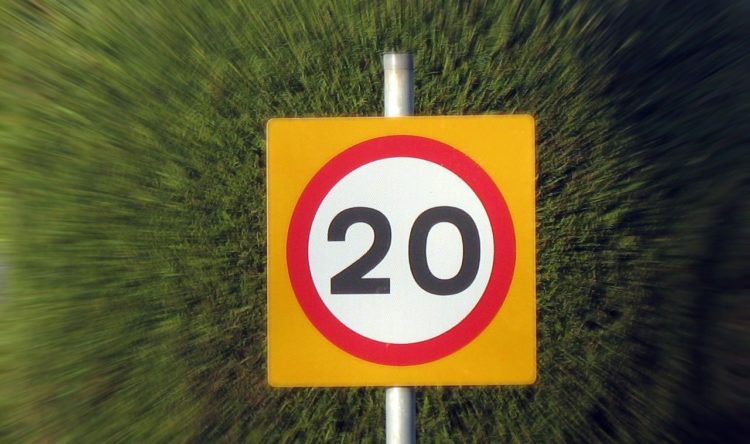Changing the licensing rules
Both EU and UK look to make changes to driver licensing
Plans to allow 17-year-olds to drive heavy goods vehicles (HGVs) have been called “dangerous”.
However, the European Parliament’s transport committee has formally agreed to back proposals to reform driving licence rules in the European Union.
The vote resulted in a majority of one.
Danger concerns
Comments by the European Transport Safety Council (ETSC) reveal that they have many reservations about the decision. They believe it could have devastating consequences for road safety if the amendments agreed make it into the final legislation.
MEPs backed the European Commission’s decision. This includes requirements that issuing driving licences to 17-year-olds to drive heavy goods vehicles requires an accompanied driving scheme.
ETSC says this has the potential to massively expand the number of teenagers driving lorries. This, it believes, would have very negative consequences for road safety.
Today, only five countries allow teenagers as young as 18 to drive a lorry: Finland, Germany, Ireland, Poland and Spain.
Data from Finland, Germany and Poland clearly show that the youngest lorry drivers (18-19 years) are much more likely to cause a crash, claims the road safety group.
It says that from a road safety perspective, the minimum age in the EU for lorry drivers should be 21. This is currently the ‘recommended’ minimum.
16 year-olds behind the wheel
Dropping age thresholds also saw the transport committee supporting the idea of allowing children aged 16 to drive speed-limited cars. This is an idea originating in Finland.
The Commission’s own impact assessment on this idea said that “the measure may pose an additional road safety risk, notably for vulnerable road users”.
Ellen Townsend, policy director at ETSC, said: “This legislation was introduced under the banner of a ‘road safety package’ – but frankly if we end up encouraging large numbers of teenagers to drive lorries the consequences will be devastating.
“Ahead of the plenary vote in the European Parliament in January, we hope policymakers will take a step back and reconsider the consequences of these changes, before voting on plans that will make our roads more dangerous for everyone.”
UK views
The UK Government is separately considering its own changes to driving licence rules.
More than two thirds (69%) of respondents to a Government consultation say all licensed drivers should be automatically entitled to drive vehicles up to 7.5 tonnes.
The Department for Transport (DfT) consultation was launched in August 2022. It sought views on a series of changes to the driving licence regime, including allowing drivers behind the wheel of a vehicle weighing up to 7.5 tonnes.
Analysis of responses to the DfT consultation published in June appears to show support for the change. It come despite some safety concerns.
Currently, a category B (car) licence entitles holders to drive vehicles up to 3.5t and alternatively fuelled vehicles up to 4.25t (the latter with five hours of additional training) for commercial carriage of goods.
The C1 licence covers medium-sized vehicles from 3.5-7.5t, plus a trailer of a maximum authorised mass (MAM) of up to 750kg. Combined it totals 8.25t.
Drivers who passed their car test prior to January 1997 are entitled to drive a light lorry or heavy van (C1) without the need for a separate test.
DfT statistics suggest show a dramatic drop in C1 licence holders after an EU directive added the new C1 test and licence. The number of C1 vehicles and their mileage has more than halved down by 58%, from around 2.9 billion miles in 2000, to 1.2bn miles in 2019.
Vans overtake lorries
Over the same period, lighter vans mileage has increased by 71%, with HGV mileage remaining relatively flat.
The DfT consultation revealed that more than two-thirds (69%) of the 2,000-plus respondents support the entitlement change. Meanwhile, around a quarter (27%) said do not. A small number (3%) said they did not know.
Those against highlighted the size and weight difference of C1 vehicles to cars, raising crash risk.
But the vast majority of respondents agreed that there should be an age restriction, and that additional testing should be in place.
Two-thirds (65%) thought it should be 21 years and above, while around one in eight (12%) thought it should be from 18-plus.
A further one in eight consultees (13%) specified a different age, from aged 19 to over 30 years of age.
Experience key
The consultation also revealed that 90% also believed that experience behind the wheel was needed. Gaining valuable driving experience was important before being allowed to drive a C1 vehicle.
Half (50%) thought there should be a minimum period of time of two years. A quarter (23%) thought it should be one year.
Just one in ten (10%) did not think that there should be a minimum period of time.
The DfT says it is considering responses to the consultation before deciding what changes may be taken forward.
Lower drink drive limits
In Europe, MEPs also backed the concept of an EU-wide zero-tolerance limit for alcohol for novice drivers.
This would see newly-qualified drivers subject to a low 0.2 g/l blood alcohol concentration limit.
However, this change would only affect Belgium, Bulgaria, Denmark and Finland. All other EU Member States already set a limit of 0 or 0.2 for novice drivers. Spain’s limit for this group is 0.3.
A revised EU Driving Licence Directive will need to be negotiated by MEPs next year. This includes input from EU transport ministers and the European Commission.






